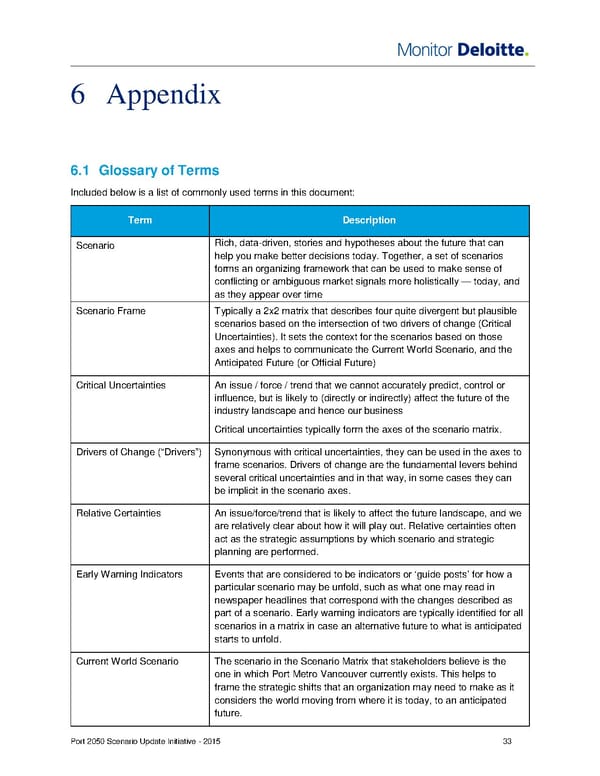6 Appendix 6.1 Glossary of Terms Included below is a list of commonly used terms in this document: Term Description Scenario Rich, data-driven, stories and hypotheses about the future that can help you make better decisions today. Together, a set of scenarios forms an organizing framework that can be used to make sense of conflicting or ambiguous market signals more holistically — today, and as they appear over time Scenario Frame Typically a 2x2 matrix that describes four quite divergent but plausible scenarios based on the intersection of two drivers of change (Critical Uncertainties). It sets the context for the scenarios based on those axes and helps to communicate the Current World Scenario, and the Anticipated Future (or Official Future) Critical Uncertainties An issue / force / trend that we cannot accurately predict, control or influence, but is likely to (directly or indirectly) affect the future of the industry landscape and hence our business Critical uncertainties typically form the axes of the scenario matrix. Drivers of Change (“Drivers”) Synonymous with critical uncertainties, they can be used in the axes to frame scenarios. Drivers of change are the fundamental levers behind several critical uncertainties and in that way, in some cases they can be implicit in the scenario axes. Relative Certainties An issue/force/trend that is likely to affect the future landscape, and we are relatively clear about how it will play out. Relative certainties often act as the strategic assumptions by which scenario and strategic planning are performed. Early Warning Indicators Events that are considered to be indicators or ‘guide posts’ for how a particular scenario may be unfold, such as what one may read in newspaper headlines that correspond with the changes described as part of a scenario. Early warning indicators are typically identified for all scenarios in a matrix in case an alternative future to what is anticipated starts to unfold. Current World Scenario The scenario in the Scenario Matrix that stakeholders believe is the one in which Port Metro Vancouver currently exists. This helps to frame the strategic shifts that an organization may need to make as it considers the world moving from where it is today, to an anticipated future. Port 2050 Scenario Update Initiative - 2015 33
 Monitor Deloitte - Final Report Page 34 Page 36
Monitor Deloitte - Final Report Page 34 Page 36